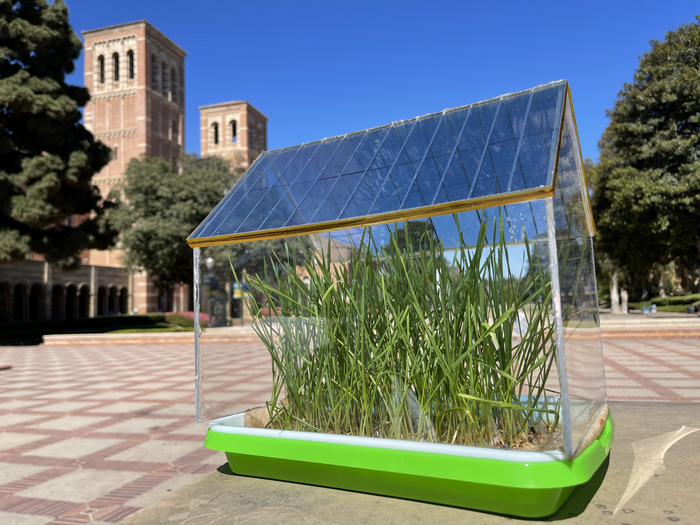UCLA researchers have developed organic solar (OPV) cells that can provide energy to greenhouses while also blocking ultraviolet rays to prevent overheating.
“We already established a startup that will scale up production of these organic solar cells for industrial use,” researcher Minhuan Wang told pv magazine.
The new device features the L-glutathione antioxidant as a reductive interlayer. This facilitates charge transfer between the cell’s zinc oxide (ZnO) layer and the photoactive layer made, which is made of a non-fullerene acceptor known as PM6:Y6, the scientists said in “Achieving sustainability of greenhouses by integrating stable semi-transparent organic photovoltaics,” which was recently published in Nature Sustainability.
They built the cell with a substrate made of glass and indium tin oxide (ITO), the novel interlayer, the photoactive layer, a hole transport layer made of molybdenum trioxide (MoO3), and a silver (Ag) metal contact.
“The l-G molecule can effectively nullify both major defects in the ZnO film and reduce the carrier recombination at the interface,” the academics said, in reference to the passivation effect of the interlayer. “The charge transfer from the ZnO surface to the O 2 is impeded by the l-G molecule, preventing the formation of the superoxide molecule.”
According to their findings, the new interlayer has two different functions. On one side, it acts as a passivation agent and, on the other side, it suppresses superoxide formation, which is usually triggered by the oxygen vacancy on the ZnO surface.
“The suppressed superoxide and hydroxide radical generation notably led to enhanced operational stability of the encapsulated semi-transparent OPV devices with the PM6/Y6 photoactive layer,” the US group said. “The devices with the l-G interlayer retained over 84% of their initial efficiency after 1,008 h continuous exposure under illumination.”
With the addition of the interlayer, the cell efficiency also increased – from 11.6% to 13.5% – with an enhancement of the short-circuit current density from 20.5 to 22.2 mA cm−2. “Additionally, due to the strong reducibility of the l-G molecule, the production of the radicals is reduced,” the scientists said.
They also tested the growth of common crops such as wheat, mung beans, and broccoli in a setup with a transparent glass roof with segments of inorganic solar cells and a setup with a roof made entirely from semi-transparent organic solar cells.
“The crops in the greenhouse with the organic solar roof grew more than the crops in a regular greenhouse,” they stated, noting that the L-glutathione layer blocked ultraviolet rays, which are detrimental to plant growth, as well as infrared rays, which can cause greenhouses to overheat.
“We didn’t expect the organic solar cells to outperform a conventional glass-roof greenhouse,” said co-author Yepin Zhao. “But we repeated the experiments multiple times with the same results and after further research and analysis, we discovered that plants don’t need as much sunlight to grow as we’d originally thought.”
This content is protected by copyright and may not be reused. If you want to cooperate with us and would like to reuse some of our content, please contact: editors@pv-magazine.com.









By submitting this form you agree to pv magazine using your data for the purposes of publishing your comment.
Your personal data will only be disclosed or otherwise transmitted to third parties for the purposes of spam filtering or if this is necessary for technical maintenance of the website. Any other transfer to third parties will not take place unless this is justified on the basis of applicable data protection regulations or if pv magazine is legally obliged to do so.
You may revoke this consent at any time with effect for the future, in which case your personal data will be deleted immediately. Otherwise, your data will be deleted if pv magazine has processed your request or the purpose of data storage is fulfilled.
Further information on data privacy can be found in our Data Protection Policy.